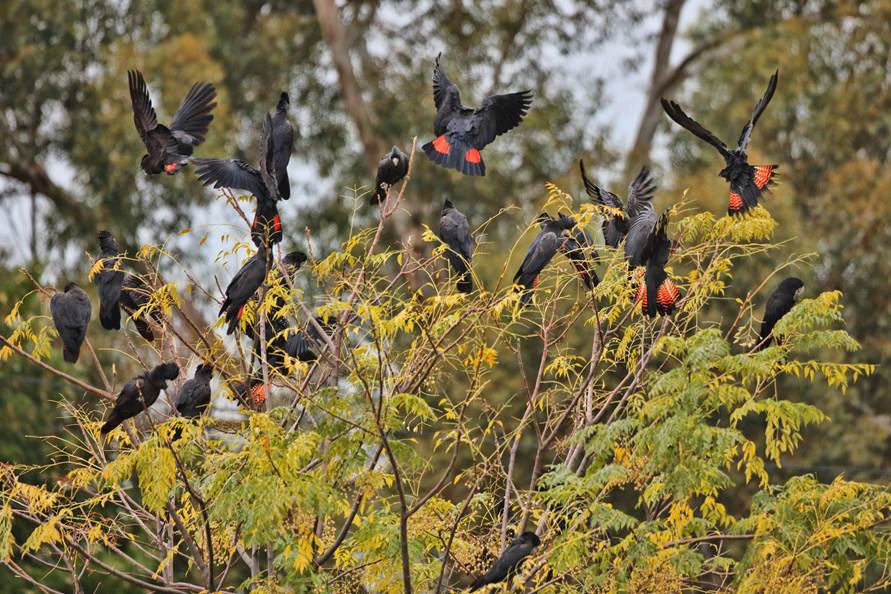I mentioned to Michael, but I'll inflict this on all of you. The White Cedar is a favoured food of the western NSW population of Red-tailed Black-Cockatoo. I used to visit Bourke each winter just for the spectacle. If you left it too late there would not be a single fruiting W Cedar anywhere in town. The below tree is at the end of its useful stage for the season (18 June 2016)

-----Original Message-----
From: Birding-Aus <> On Behalf Of Michael Hunter
Sent: Tuesday, 7 January 2020 10:32 AM
To: <> <>
Subject: [Birding-Aus] Unfinished
--effectively shaping the tree to be quite compact.
Despite it being very ornamental, with light green leaves, having delightfully scented lilac flowers in spring, being covered in yellow or orange berries, and almost always with birds in it, White Cedars are a very high maintenance proposition. They are deciduous, shed twigs, dead leaves and berries for months, as noted, Currawongs regurgitate the berries into bird baths after digesting the outer flesh, but worst of all are the hairy processional caterpillars. White Cedar moths lay eggs on the new spring foliage, when they hatch and grow the caterpillars I migrate down the trunk at night and hide under the bark or dirt, eventually thousands of them litter around the tree. There is a simple solution, with apologies to any Caterpillar Rights activists reading this. Ie, spray a 20 cm band of residual insecticide around the trunk, the grubs touch it on their way down and expire.
Otherwise on the lookout for the fabled Currajong tree.
Not religious but am hoping and praying that Global Warming will reverse. Armageddon.
Michael
Sent from my iPhone
<HR>
<BR> Birding-Aus mailing list
<BR> m("birding-aus.org","Birding-Aus");">
<BR> To change settings or unsubscribe visit:
<BR> http://birding-aus.org/mailman/listinfo/birding-aus_birding-aus.org
</HR>

